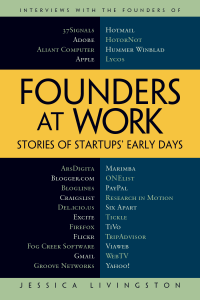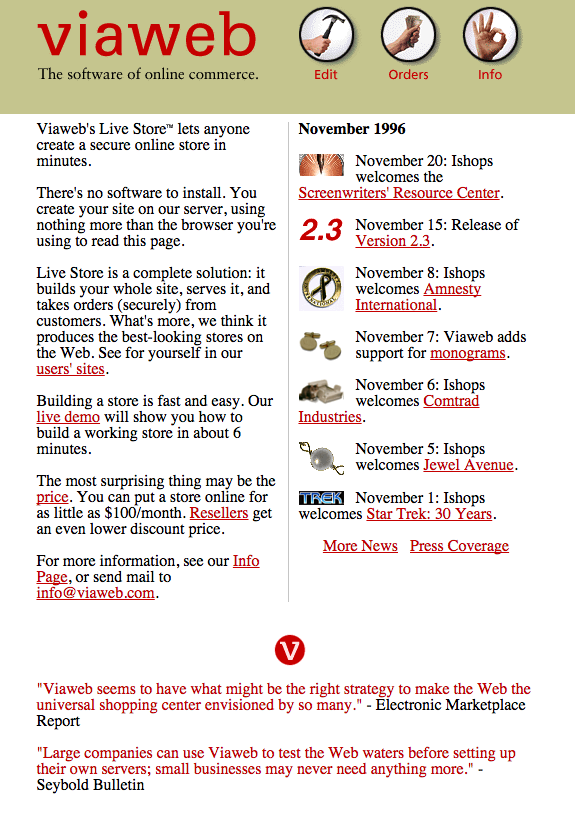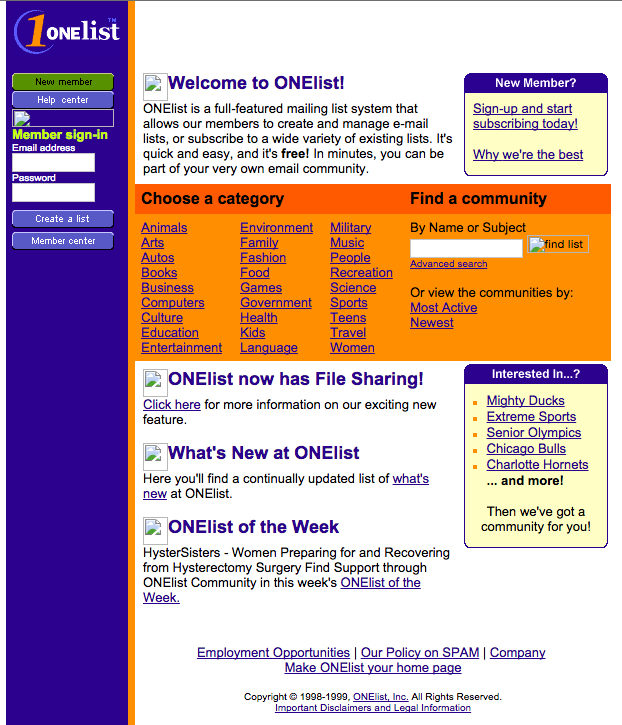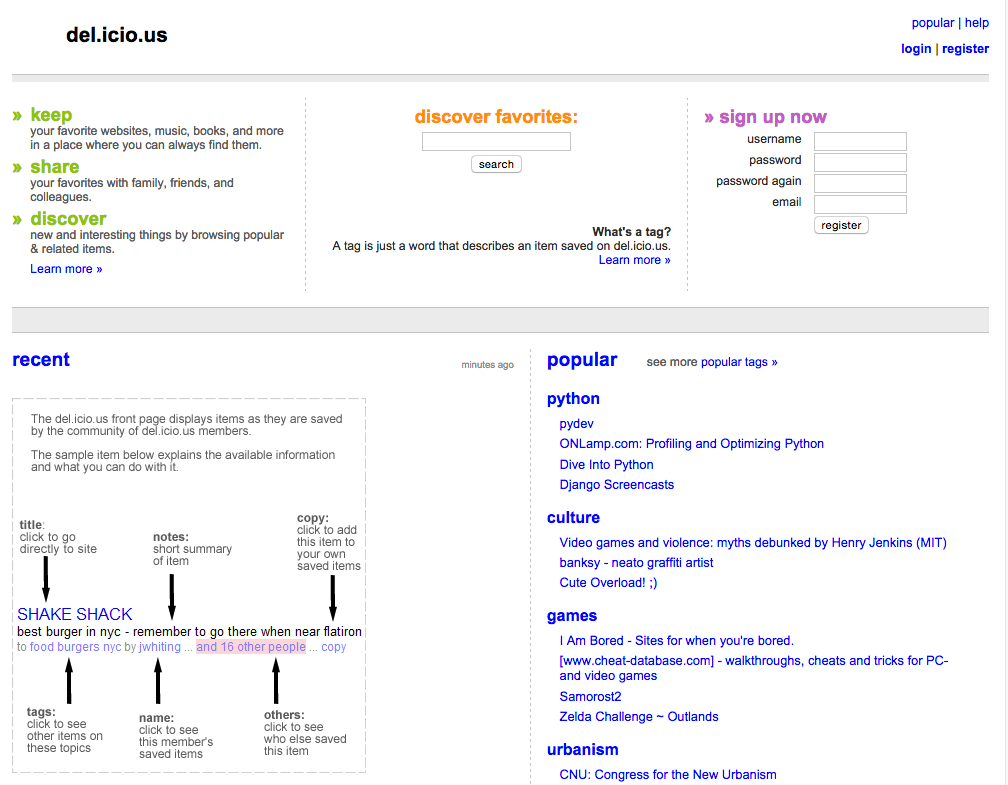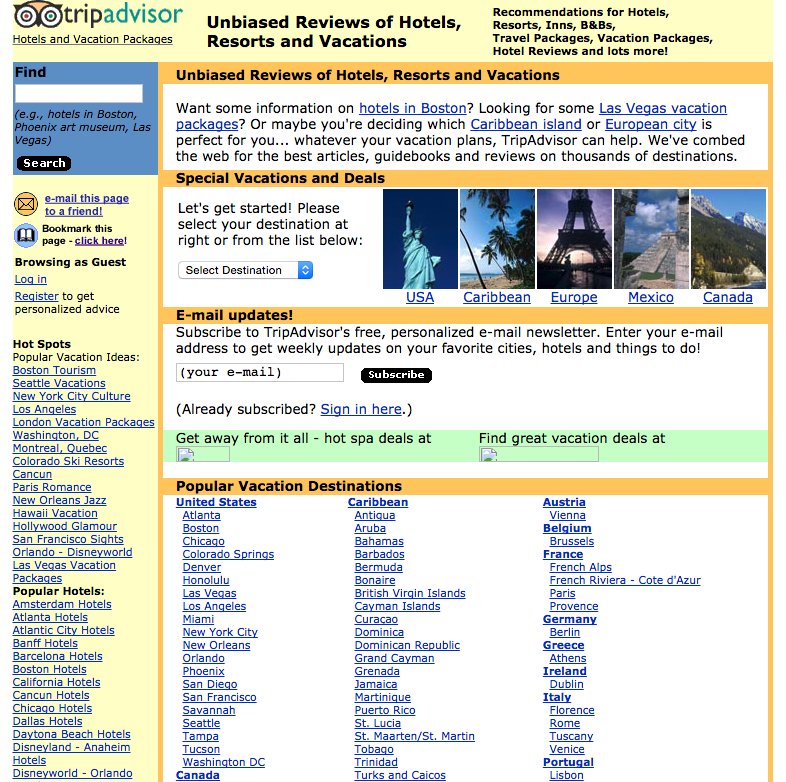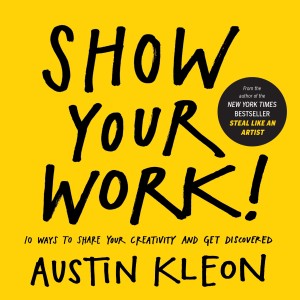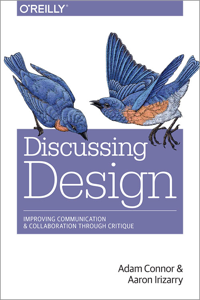
A lot of communication within a design team comes in the form of critique. Adam and Aaron explain how to deliver and receive critique. (For communicating with PMs and engineering, I’ve really enjoyed another book: Articulating Design Decisions by Tom Greever.)
You can improve as a designer by delivering useful feedback to other designers. The same way teaching is a great way to solidify knowledge, delivering useful feedback requires you to think about different aspects of design and organize your thoughts.
What kind of critique is useful? Let’s take a look.
Critical thinking
I love Dribbble — it’s a positive place on the internet, and that’s a great thing. However, it’s not the best place to look for effective critique. Adam and Aaron’s three key elements to effective critique can help explain why:
“1.) It identifies a specific aspect of the idea or a decision in the design being analyzed.”
People complain that Dribbble feedback isn’t useful for finding flaws and improving design. “Good job” and “Great work!” aren’t specific at all.
“2.) It relates that aspect or decision to an objective or best practice.”
A lot of time, the work shared on Dribbble is a detail shot or some other form of a very small part of a larger project. There isn’t enough shown and sometimes there isn’t an objective at all to relate critique to.
You should be basing design decisions on objectives and best practice. When starting out, it’s good to lean on best practices to build out something that mostly works. It’s okay to stray away from best practices if your solution works better for a project objectives.
When critiquing, think about design aspects that are going against objectives or best practices. Otherwise you might simply be saying that your arbitrary choice is better than their arbitrary choice.
“3.) It describes how and why the aspect or decision work to support or not support the objective or best practice.”
Good critique requires effort on both ends. Presenting something while also explaining all the factors involved — constraints, timelines, background info — takes effort. Parsing this info and fully understanding the problem being designed for also takes effort.
Combined, this is probably why there’s not a hugely popular community for useful design feedback. If people took the time to do that on Dribbble, it wouldn’t be a light, fun place to go to. It wouldn’t be Dribbble.
Feedback that doesn’t nail these three elements might fit into another category. Let’s take a look.
Reactions and directions
Discussing Design describes three types of feedback: reaction-based, direction-based, and critique.
Reaction-based feedback includes the quick emotional responses you’ll often get when showing something for the first time. “Nope.” and “Good work!” are examples. You can tell how useful feedback is by asking the following questions:
“…are the people from whom you’ve asked for feedback reflective of your design’s actual audience? Are they looking at it the same way your potential users would? Does this reaction divulge anything specific about any of the design decisions you’ve made so far or their effectiveness?”
With reaction-based feedback, the answer to these questions is usually “no”.
If you leave a meeting with a list of changes, that’s direction-based feedback. It answers “yes” to some of the above questions, so there’s a time and place for it. But it can be an issue:
“Similar to reaction-based feedback, direction-based feedback without any explanation indicates nothing about the effectiveness of your decisions in meeting the design’s objectives. Sure, if the person giving you feedback is the one who will ultimately approve the design, she might supply you with a to-do list that you could act upon to get her approval, but getting that approval and creating an effective design are not necessarily the same things.”
Sometimes you might hit the three elements of critique and it still won’t be useful. How come? The timing might be off.
Critique Timing
Connor and Irizarry provide a good rule of thumb for when to critique solutions:
“For example, the best time to critique a solution is after it is 20 percent baked but before it’s 80 percent baked.”
When you’re in that 20%–80% sweet spot, it’s good to receive critique often. Discussing Design refers to “Dailies” done at Pixar. I went to the bookshelf (read: searched my Kindle) to check out what Edwin Catmull had to say about Pixar Dailies in Creativity Inc.:
“The first step is to teach them that everyone at Pixar shows incomplete work, and everyone is free to make suggestions. When they realize this, the embarrassment goes away—and when the embarrassment goes away, people become more creative. By making the struggles to solve the problems safe to discuss, then everyone learns from—and inspires—one another. The whole activity becomes socially rewarding and productive. To participate fully each morning requires empathy, clarity, generosity, and the ability to listen. Dailies are designed to promote everyone’s ability to be open to others, in the recognition that individual creativity is magnified by the people around you. The result: We see more clearly.”
Engineering won’t have time to incorporate design improvements after the 20%–80% sweet spot. Before the sweet spot, it’s better to continue creating without stopping for critique. How come? Each task requires a different mindset.
Mindsets: Creative vs. Analytical
Many writers write and edit separately because they require different mindsets. One mindset is creative and the other is analytical. Adam and Aaron discuss how these different mindsets apply in design and critique:
“When designing something, the brain operates as a toggle, switching between creative thinking — where individuals are generating ideas or assembling parts of ideas — and analytical thinking — where they are determining whether what they’ve designed so far is in line with what they are trying to achieve. Experienced designers, artists, engineers, and others have learned how to be deliberate in controlling when to make this toggle, periodically pausing their creative work to take a step back and critique what they have so far.”
Discussing Design lays out some techniques to facilitate effective critiques.
Design Studio
In the Google Ventures design sprint methodology, diverging and deciding are separate steps.
Teams generate as many ideas as possible with mind maps and Crazy 8s. At the end, participants select the best ideas based on the objectives.
Discussing Design describes a similar technique called Design Studio. They mention Todd Zaki Warfel adapting the technique from other design disciplines to the digital world. Back to the bookshelf, here’s an excerpt from Warfel’s book, Prototyping: A Practitioner’s Guide:
“In the world of architecture and industrial design, a design studio is a process, not just a physical place. This process is taught in every respectable architecture and industrial design program. You’ll be hard pressed to find a design studio class in computer science.”
“In studio classes, you design or prototype and present to your peers. Your peers critique your work, highlighting the strengths and areas that still need some work.”
Adam and Aaron describe a three-charrette activity to quickly go through multiple rounds of design and critique. Like Crazy 8s, it involves timed sketching. Their activity goes like this:
- 8 minutes for six sketches of different concepts
- 8 minutes for iterating on their strongest idea
- 20 minutes as a team to sketch one idea
Sum Up
Here are some key takeaways from Discussing Design:
- Quality: Objectives and best practices are your guiding light for effective critique.
- Timing: Critique is most useful when it takes place during the 20%–80% sweet spot.
- Mindsets: Creation and critique require different mindsets and should be separated.
Embracing critique and following these principles will help you be more effective in delivering and receiving critique.
